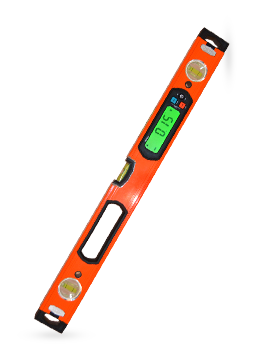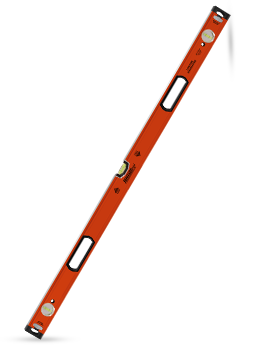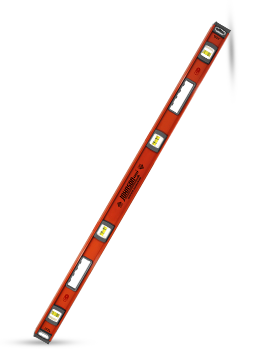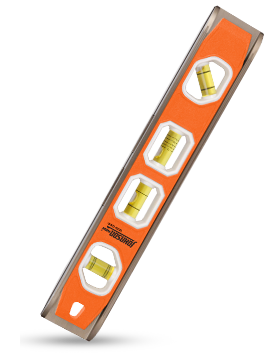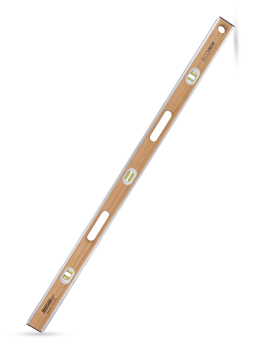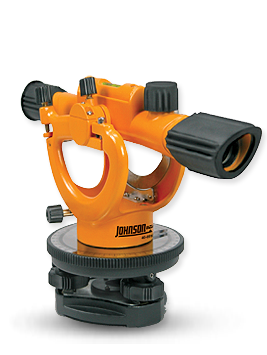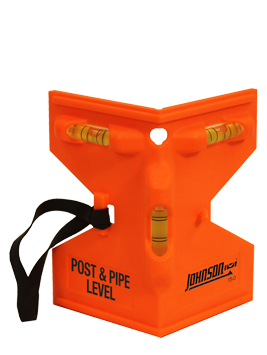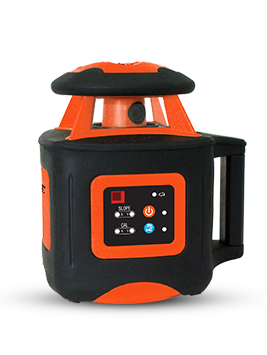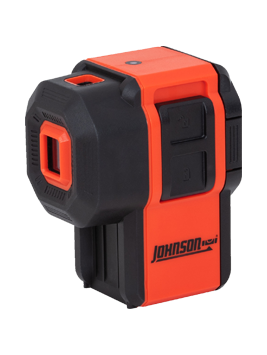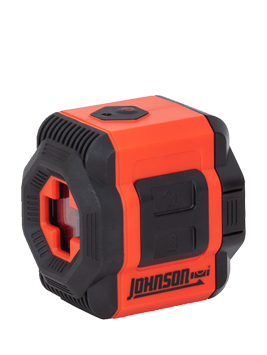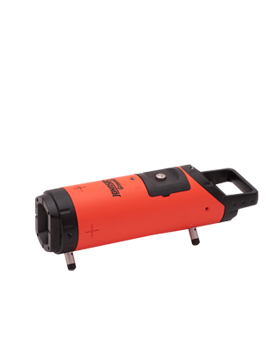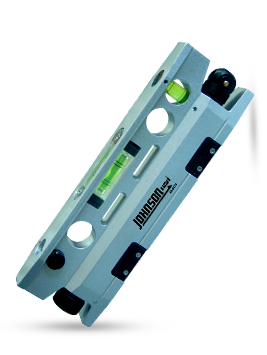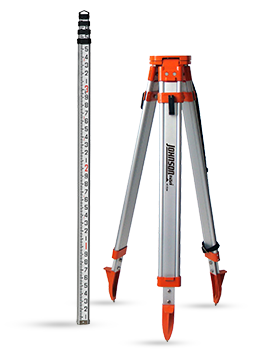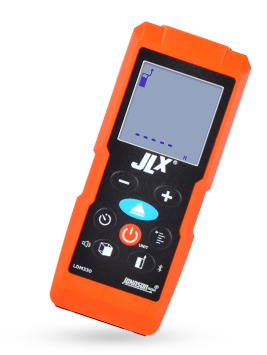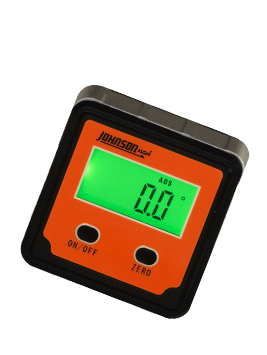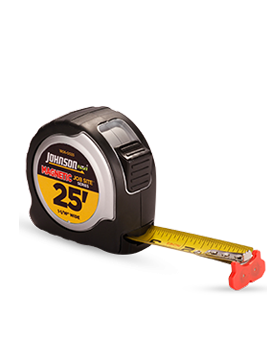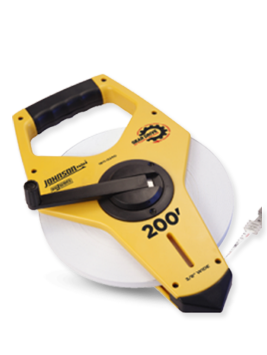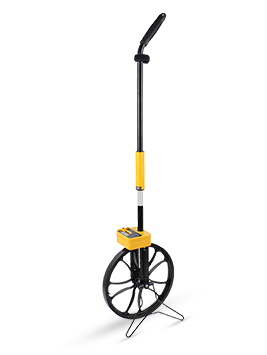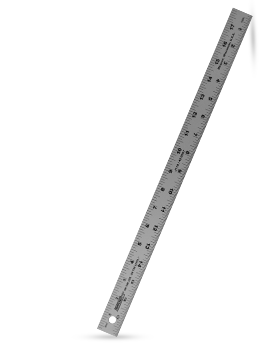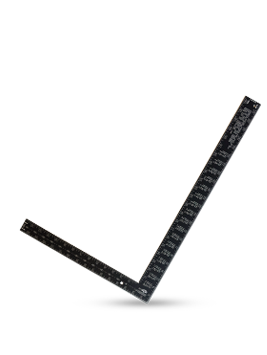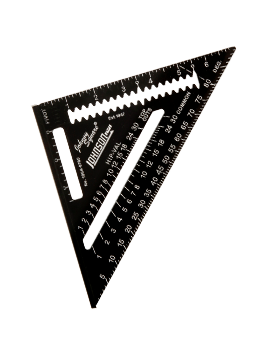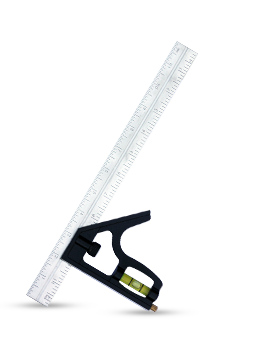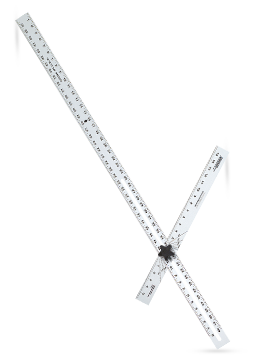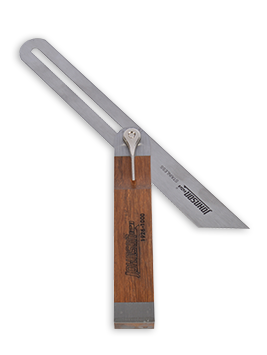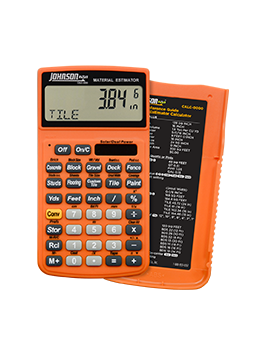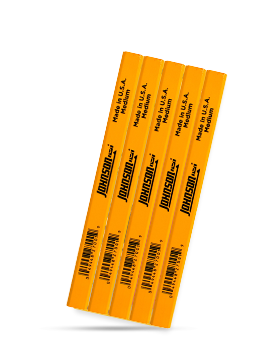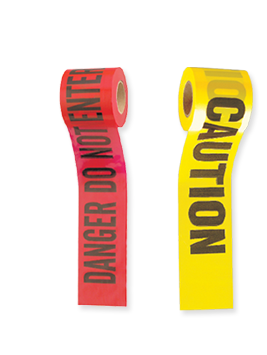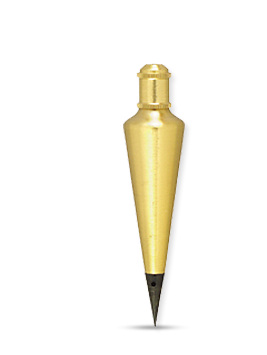News
Video: How to Find Level Using Automatic Level and Grade Rod
Setting Rails to Level for a Plasma Cutter Johnson Level demonstrates using the 40-6926 26X automatic level on a construction jobsite to set rails for a movable plasma cutting table for high precision steel cuts at Wausau Steel. VIDEO TRANSCRIPT Hello,...
See the full article
Levels 101: Spirit Level Vial Quiz
Questions Q1: Why is a level called a spirit level? What is a spirit level? Q2: Is the shape of the level vial a cylinder shape or a barrel shape? Q3: How big is the bubble in the level? Q4: What is the bubble in the spirit level or bubble level made of? Q5: Why do some levels, particularly woo...
See the full article
Video: How to Install and Align a Rail System with a 26X Automatic Level
Using a 26X Automatic Level Model #40-6926 (optical instrument / transit level) to install and align a rail system for a movable, high-tech steel cutting tool. The project includes the use of a grade rod to sight the rail system's height and a heavy duty tripod to hold the transit at a steady an...
See the full article
History of the Level - How the Bubble Level Began
Although the spirit level or bubble level is relatively new considering the history of man, the concept of level and plumb, or a tool that levels, has been around for ages. Ancient Egypt Ancient Egypt was one of the first civilizations to have solved many problems of construction as evidenced by t...
See the full article
Laser Distance Measure
How to Calculate Distance Using Laser Distance Measure How to Calibrate a Laser Distance Measure How to Use a Laser Distance Measure View all laser distance measures from Johnson Level. Accurate Measuring: Fast & Easy With a simple 1-2-3 measuring system (Point-Press-Done), the Jo...
See the full article
Magnetic Pulley (Sheave) Alignment Lasers
Magnetic Pulley (Sheave) Alignment Defined All Johnson pulley (sheave) alignment systems are accurate enough to exceed belt manufactures' recommendations for drive belt alignment. This includes Standard V, Synchronous, Polyflex® and Micro-V® belts that should be aligned within ¼°...
See the full article
Project/User: Construction & Building Contractors
Construction & Building Contractors See how contractors buidling homes and offices use rotary laser levels, line laser levels, dot laser levels, torpedo laser levels and optical levels. Application Rotary Laser Levels Line Laser Levels Dot Laser Levels Torpedo Laser...
See the full article
Project/User: Electricians
Electricians See how electricians can use rotary laser levels, line laser levels, dot laser levels and torpedo laser levels for electrical jobs. Since optical levels are used to level over long distances, generally, they will not be used by an electrician, indoors. Application R...
See the full article
Project/User: Homeowners & Decorators
Homeowners & Decorators See how homeowners and decorators use rotary laser levels, line laser levels, dot laser levels and torpedo laser levels. Since optical levels are mainly used in leveling over longer distances, optical levels are not commonly used by homeowners indoors. App...
See the full article
Project/User: Finish Carpenters
Finish Carpenters See how finish carpenters use rotary laser levels, line laser levels, dot laser levels and torpedo laser levels. Since optical levels are used for leveling over longer distances, finish carpenters will not find a need for them indoors. Application Rotary Laser ...
See the full article
Project/User: Deck Builders
Deck Builders See how contractors who build decks use rotary laser levels, line laser levels, dot laser levels and torpedo laser levels. Application Rotary Laser Levels Line Laser Levels Dot Laser Levels Torpedo Laser Levels Optical Laser Levels Level Floo...
See the full article
Project/User: Others
Other End-Users Below are some examples of other professionals, such as road builders, masons and farmers who use rotary laser levels, line laser levels, dot laser levels, torpedo laser levels and optical levels. Application Rotary Laser Levels Line Laser Levels Dot Laser Le...
See the full article
Project/User: Pre-Construction Contractors
Pre-Construction Contractors See how contractors who do site preparation and pre-construction work for a new building or home use rotary laser levels, line laser levels, dot laser levels, torpedo laser levels and optical levels. Application Rotary Laser Levels Line Laser Levels ...
See the full article
The Symbolism of the Mason s Level
Excerpt From: THE WORKING TOOLS OF THE CRAFT, CHAPTER V, MASONIC ESSAYS (1998), W.M. DON FALCONER, THE CRAFT As a working tool of an operative mason, the level is used to set all required points to the same level on a construction site. From this is derived its symbolic interpretation, which ...
See the full article
The Symbolism of the Plumb Rule
Excerpt From: THE WORKING TOOLS OF THE CRAFT, CHAPTER V, MASONIC ESSAYS (1998), W.M. DON FALCONER, THE CRAFT Plumb lines and plumb rules are implements used to determine a vertical plane, often called plummets in the scriptures. Each depends upon a line from which a heavy plumb bob is suspend...
See the full article
The Symbolism of the Mason s Square
Excerpt From: THE WORKING TOOLS OF THE CRAFT, CHAPTER V, MASONIC ESSAYS (1998), W.M. DON FALCONER, THE CRAFT The three types of square used by operative masons were the square gauge, the trysquare and the gallows square. The square gauge is an enclosed square of the required inside dimensions...
See the full article
Choosing an Outdoor Rotary Laser Level
This article will help you determine if an outdoor rotary laser level is the right choice for your needs. Rotary lasers levels project a beam of light 360° allowing the user to establish a horizontal or vertical plane. Common End User Applications 1. Construction Contractor...
See the full article
Choosing an Indoor Rotary Laser Level
This article will help you select a rotary laser level for indoor use. Rotary lasers levels project a beam of light 360° allowing the user to establish a horizontal or vertical plane. Common End User Applications 1. Construction Contractors Layout of interior walls 2. Contractors...
See the full article
Choosing a Rotary Laser Level for Both Indoor & Outdoor Use
How to Choose a Rotary Laser Level View all rotary laser levels from Johnson Level. Consult our how-to guide on how to calibrate and use rotary laser levels. This article will help you determine whether or not an indoor or outdoor rotary laser level is a best fit for your needs. Rotary l...
See the full article
How to Choose Dot Laser Levels / Plumb Laser Levels
This article will help you determine if a dot laser level fits your needs. Dot lasers levels, also known as plumb laser levels, project laser dots either vertically, horizontally or at right angles allowing the user to establish plumb lines or right angles. Common End User Applications ...
See the full article
Choosing A Line Laser Levels for Outdoor and Indoor Use
This article will help you determine if an indoor line laser level will fit your needs. Line Lasers project lines either vertical, horizontal or vertically and horizontally simultaneously. All line laser levels are self-leveling and higher quality line laser levels will have a locking compensa...
See the full article
How to Choose a Laser Distance Measure
This article will help you better understand laser distance measuring. For jobs where you could use a tape measure, a laser distance measurer can be faster and just as accurate. Press a button to read and record all measurements accurate + 1/6" up to 165 ft. Models Recommended for Indoor Use LDM85...
See the full article
Choosing Optical Instruments
How to Use an Automatic Optical Level Shop all optical levels from Johnson Level. This article will help you choose an optical instrument, commonly referred to as a transit level, builder's levels and automatic levels. Transits are used to establish grades & elevations as well as...
See the full article
Choosing Digital and Electronic Levels
Digital and Electronic Level How To's How to Choose Digital Electronic Level How to Use Digital Electronic Level How to Calibrate an Electronic Level View all Digital and Electronic Levels from Johnson Level. This article will help you choose between digital and electronic levels. S...
See the full article
Choosing A Laser Level
Choosing the laser levels for your project can be easy if you answer the following questions. Question 1: What kind of work is the laser level going to be used for? Make sure to have a clear definition in mind. Are you building decks or house foundations? Is the work indoors, outdoors, or may...
See the full article
Line Laser Levels
How to Use a Line Laser Level How to Use a Self Leveling Laser Level View all line laser levels from Johnson Level. Today, the three most common types of laser levels are Rotary Laser Levels, Laser Line Levels (or Line Generators) and Dot Laser Levels (or Multi-Point Lasers). This article foc...
See the full article
Line Laser Levels Product Applications
Today, the three most common types of laser levels are Rotary Laser Levels, Line Laser Levels (or Line Generators) and Dot Laser Levels (or Multi-Point Lasers). This article focuses on Line Laser Levels and practical applications of use indoors and outdoors. Interior Applications An easy example t...
See the full article
Dot Laser Levels / Plumb Laser Levels
Today, the three most common types of laser levels are Rotary Laser Levels, Line Laser Levels (or Line Generators) and Dot Laser Levels (or Multi-Point Lasers). This article focuses on the technical specifications of Dot Laser Levels. Dot Laser Level Output Dot Laser Levels project two, three or f...
See the full article
Dot Laser Levels Product Applications
Today, the three most common types of laser levels are Rotary Laser Levels, Line Laser Levels (or Line Generators) and Dot Laser Levels (or Plumb or Multi-Point Laser Levels). This article focuses on Dot Laser Levels, indoor and outdoor leveling applications on the construction job site or in the ho...
See the full article
Wood Levels
A wood level is specific type of spirit level. It can be made either of a solid piece of wood, like birch or mahogany, or can be a slow growth lumber laminate, which means several pieces of wood strips are pressed and glued together. Laminates are much stronger than solid blo...
See the full article
Carpentry Tools: Rafter Angle Squares
Rafter Angle Square How To's How to Read a Rafter Angle Square How to Use a Rafter Angle Square How to Use a Rafter Angle Square for Roof Pitch How to Use a Rafter Angle Square for Rafters How to Cut Rafters with a Rafter Angle Square View all construction squares from Johnson Level....
See the full article
Carpentry Tools: T-Bevels
A sliding T-bevel is an instrument that is used for both laying out and transferring angles. These tools are pivotal for many different kinds of construction jobs, especially for those in which the ideal 90° angles are not possible. With the sliding T-bevel, one is able to conform his/her projec...
See the full article
Replacing Spirit Level Vials
Typically, I-beam levels have vials that are snapped into the frame. If the this type of level vial needs replacing, it can be done easily and with the same accuracy as when the level was new by simply removing the old vial and replacing it with a new one. For I-beam levels, this procedure will ge...
See the full article
Caring for Wood Levels
Proper handling and storage are required to maintain the quality of wood levels. The following suggestions will help keep your wood level in top condition. KEEP YOUR WOOD LEVEL CLEAN Cement contains chemicals that can break down the layers of lacquer that were originally applied to the level. Be s...
See the full article
Combination Squares
How to Use a Combination Square How to Use a Combination Square for Angles View all combination squares from Johnson Level. Parts of a Combination Square What is a Combination Square? A combination square is a multi-use measuring instrument which is primarily used for e...
See the full article
Rotary Laser Levels Product Applications in Construction
How to Set Up a Rotary Laser Level How to Calibrate a Rotary Laser Level How to Use a Rotary Laser Level Today, the three most common types of laser levels are Rotary Laser Levels, Line Laser Levels (Line Generators) and Dot Laser Levels (Multi-Point Lasers). This article focuses on Rotary La...
See the full article
Testing Bubble Level Vial Accuracy
IMPORTANT: make sure that the working edges of the level and the surface you are using are completely free of any foreign material or debris. Testing Bubble Level Accuracy For Level Vials: Place the level on a flat horizontal surface Note the position of the bubble and mark the position of the ...
See the full article
Laser Level Safety
Even though the beam coming out of a laser level has only a small amount of power, it is concentrated enough to harm your eyes. Anyone using a laser level should follow the below precautions: NEVER stare into a laser beam. If you are wearing tinted lenses to increase the laser beam’s inten...
See the full article
Q&A on Laser Levels
Q: Where can I get my Johnson laser level serviced when it is out of warranty? A: Please click the link for Service Centers under Support in the main menu for a complete list of Authorized Non-Warranty Repair Centers. Q: Does the Johnson Level & Tool limited warranty apply to items purchased o...
See the full article
Glossary of Laser Level Terms
ACCURACY The tolerance of the laser beam at a certain distance from the tool (i.e. ± ¼" per 100'). This indicates how far the beam may deviate from 'perfect' measurement. APERTURE The location from which laser light is emitted from the laser tool. AUTO-LEVELING A method where...
See the full article
Lasers 101: 27 Question Laser Level Quiz
QuestionsQ1: What are the three most common laser level types?(a) Rotary Laser; (b) Line Laser; (c) Power Laser; (d) Dot Laser; (e) Cordless LaserQ2: True or FalseRotary laser levels project a beam of light 360° allowing the user to establish a horizontal or vertical plane?Q3: True or FalseRotar...
See the full article
Rotary Lasers
ROTARY LASERS Electronic Self-Leveling 40-6580 (coming soon)40-6540/6545 (GreenBrite®) PDF40-6522 PDF40-6537 PDF40-6535 PDF40-6530 PDF40-6580 (Dual-Grade) PDF Self-Leveling 40-6543 (GreenBrite®) PDF40-6532/40-6527 PDF40-6515/40-6516/40-6517 PDF Manual Levelin...
See the full article
String Line Level Information
How to Use a String Line Level How to Use a Line Level for Pavers How to Use a Line Level to Level Ground Shop all string line levels and other special purpose levels from Johnson Level. Line levels (or "string" levels) are a special brand of spirit level used for leveling across longer...
See the full article
